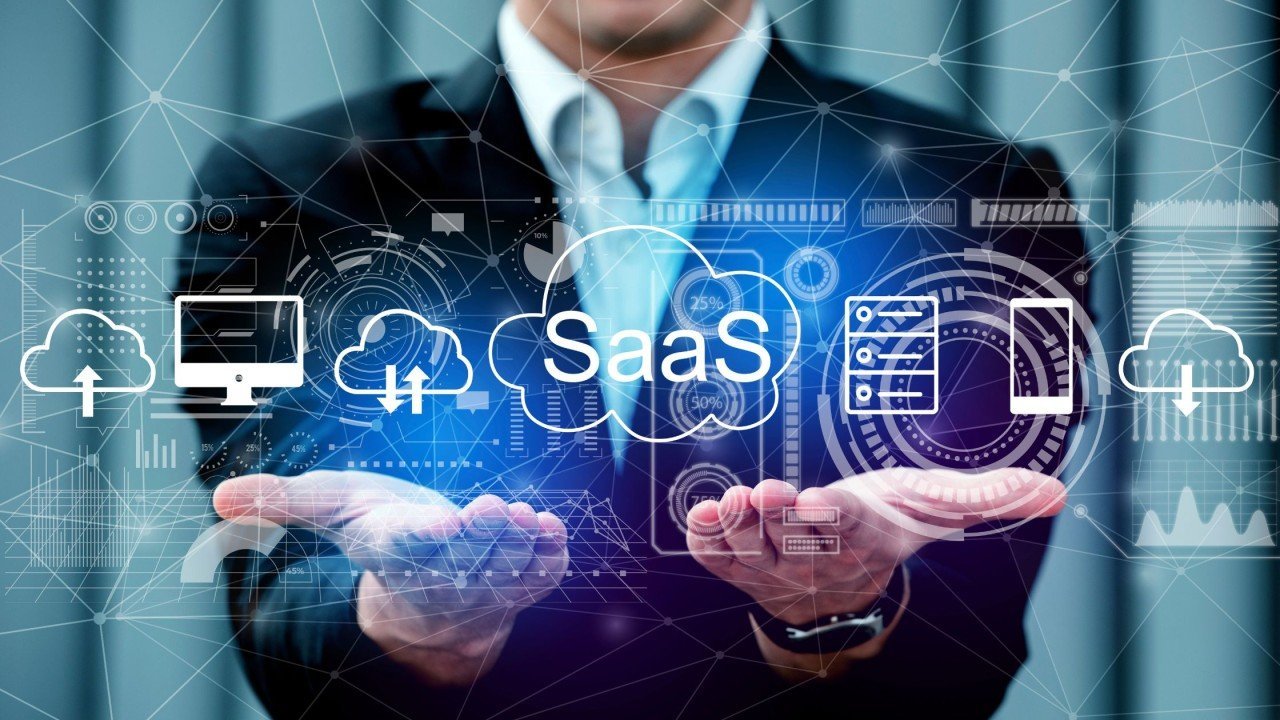We’ve all heard about SaaS model and it has been around for a while. It is one of the most important innovations in the cloud technology. The core purpose of having a SaaS model in place is to make things easier for inexperienced customers. In this article, we take a look at the latest SaaS industry trends.
SaaS stands for Software as a Service and is hence one of the important competitors of traditional software development. Cost savings are one of the important advantages of SaaS over the former, and they come in the form of lower lead generation, administrative, and operational costs. In SaaS, businesses access a fine platform to enable embedded data management, drive flexibility, shorten release cycles, amplify security, and improve scalability.
SaaS industry trends to watch out for
Towards the end of 2024, the market value of SaaS stood at $230 billion. As trends make clear, analysts project the value will only rise by the year and reach as high as $900 billion by 2030 with a CAGR of 18.7%.
Research tells us that among all apps in use currently, 70% are SaaS. This value will rise to 85% by the end of 2025. The adoption of Artificial Intelligence (AI) is one of the core factors that lies behind this development. As many as 82% of cloud companies use AI-driven features in their SaaS products. Advancements in Machine Learning (ML) and Natural Language Processing (NLP) will also empower SaaS applications, rendering intelligence and intuitiveness as low-code and no-code platforms find further adoption.
Factors behind the growth of SaaS
1. More online customers
Days post the pandemic witnessed a paradigm shift in the number of digital customers. To keep in sync with the requirements that the times were posing, businesses needed to have flexibility.
SaaS acted as the instrument that rendered this flexibility as SaaS apps can scale based on requirements. This is even while costs keep under control. This makes SaaS apps ideal for use even for small businesses.
2. High competition for SaaS products
The landscape of SaaS industry is reasonably competitive through the current times and innovation has become a must to survive in the space. Correspondingly, to retain customers upon attracting them, organizations are focusing on promoting an exceptional customer experience.
Under such circumstances, SaaS models are beneficial for organizations in several ways and let them shorten their release cycle. This is primarily because it becomes possible to develop and deploy changes or new features quickly.
3. Hybrid working culture
Hybrid working culture is the norm in several organizations. So, SaaS tools have additional utility here as they make remote work more manageable. With SaaS tools in place, hybrid and remote teams overcome geographical barriers and can operate together. These teams may want to use any internet connection and find access to the same data and tools.
This unifies workplaces and projects can progress in real time as colleagues can exchange files and everyone keeps updated in real time.
4. AI coming into prominence
With the coming of AI, SaaS offerings have revolutionized and several innovations have come to the fore. Companies across many sectors put autonomous innovations to use as a means to boost content customizations, services, and products.
This is one of the SaaS industry trends to lookout for. All this is done while companies gain insights into the requirements of target audiences via data-driven analysis. As an outcome, ROIs increase even as inputs decrease and businesses can upgrade their intelligence and efficiency.
5. SaaS industry trends
Mobile technology has changed the world irrevocably in several ways. How we associate with our work is one of the most important among them.
Organizations and businesses benefit from the advent of mobile technology as it brings more flexibility and accessibility into the picture. This has led to a series of innovations in the SaaS landscape.
This shift is visible and has introduced a discernible change in the working mechanism of several organizations that are now pioneering mobile-first solutions. When such solutions are made, mobile experience is one of the important factors that are kept in mind. A range of innovations have been unleashed as defined by these mobile-first solutions. Other related technologies ushering change include hands-free voice commands, immersive AR, and location-aware services.
6. Vertical-specific solutions
Traditional SaaS also retains its value in the wave of innovations that work towards the inception of new generation of SaaS. However, the transformative potential of SaaS is now visible across a host of industries. They include manufacturing, construction, and healthcare.
It is best to define vertical-specific SaaS solutions as the types that have been devised for a single industry. Considering the example of the healthcare industry, cloud-based platforms have the potential to streamline billing, appointments, and patient records. SaaS helps create secure and accessible EHR systems that enable clinical decision-making driven by patient data in real-time.
7. Data-as-a-Service
DaaS or Data-as-a-Service is one of the most important SaaS industry trends and signifies a shift in how businesses leverage external data upon accessing it. When a business uses DaaS, it no longer has to invest in a tedious data management infrastructure. Instead, with a wealth of information being readily available, services and applications are enhanced.
The factor that makes DaaS powerful is that its spectrum of data sources is broad and covers social media, financial data, weather patterns, and customer demographics. They yield crucial insights and aid businesses with informed decision making.
With DaaS, data acquisition and integration are automated. As internal resources free up, the focus shifts towards core competencies. So, it is not just productivity that enhances but so does resource allocation and you get to do more with less.
Businesses also learn more about their customers, competitive landscape, and market trends as sources of external data integrate with existing systems. Correspondingly, data-based decisions optimize growth and performance.
8. Security as priority
Setting up robust security measures is one of the top priorities of SaaS providers as the value of security in cyber landscape is now being understood. Matters such as preserving system integrity and safeguarding user data retain a great bit of importance. For the same, best practices across the industry are being employed such as regular security assessments, multi-factor authentication, and encryption. This is one of the SaaS industry trends not to be overlooked.
Similarly, the significance of secure remote access protocols and strong access controls have attained a new significance in the light of remote work culture where personal devices are used for completing office work. These SaaS implementations allow businesses to upkeep data integrity.
9. Personalized customer experience
When SaaS platforms are used, overall customer experience is enhanced as specified by customer support, seamless integration with other software solutions, and intuitive user interfaces. SaaS providers prioritize user experience which, in turn, induces customer loyalty.
Further, content, marketing messages, and product recommendations furnished by SaaS applications are highly personalized for being powered by data-driven insights. With this level of personalization, customer engagement reaches an unprecedented level, bringing customer retention and loyalty into the picture.
Conclusion
SaaS industry persistently evolves and innovates. SaaS industry trends for future include automation, AI, and more focus on the significance of cyber security. When developers, business owners, and SaaS enthusiasts keep up with these trends, they deliver exceptional user experiences and stay competitive.
























